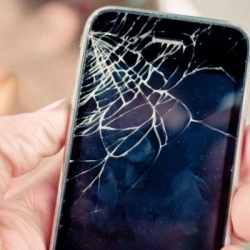Woman Calendar May Help on the Fertility Front
While there is, as yet, no mobile application that can guarantee pregnancy, there are a few apps out there designed to help women understand their own bodily cycles as a way to increase the odds of pregnancy. Most are fairly basic, offering a standard calendar that allows for the input of important dates (the start of menses, the date of ovulation, and so on). But if you’re actively trying to get pregnant and you’re not having much luck, or alternately, you’d like to wait to start a family, you might need a more comprehensive tracking tool that allows you to follow biological conditions and environmental factors in order to create a history, spot trends, and ultimately reach your fertility goals. Woman Calendar for the iPhone and iPad may be a bit pricy at $9.99, but if the functionality provided allows you to address your particular fertility issues to some degree, it could end up being the best money you ever spent.
So what do you get for the price? As it turns out, quite a bit. Obviously you’ll start with a monthly calendar – it is right in the name of the app. You can kick off your tracking by inputting the starting date of your next menstrual cycle (the first day of your period), or you could even add a history if you’ve been tracking on a paper calendar thus far. From there you can see on a daily basis how far into your cycle you are and you can add all kinds of pertinent data. For example, you may want to include you weight (since this can affect fertility) as well as your basal body temperature (BBT), which can help to indicate the days when you’re most likely to ovulate. You can also track anything else you think might be useful, such as PMS symptoms, cervical fluids, and sexual activity.
But you might be wondering what inputting all of this data will do for you. The app is not just a means of figuring out when your next period might start, although it can be handy in that respect since most of us aren’t on the perfect 28-day cycle. However, the real benefit of using Woman Calendar is that it helps you to create a history, and it also provides you with a variety of ways to view your data. You can look at information on the calendar, of course, but you might also view it in a spreadsheet or via charts and graphs. Often a different means of visualization can help to spot trends that you might not otherwise see. And the app also offers a forecasting tool that uses past data to predict future cycles. If you’re trying to pin down your most likely date of ovulation (since the egg only lives about 12-24 hours after it has been released from the ovary), this app can definitely help.
Of course, you can also email or print reports of the data you’ve entered into the app. Whether you’re seeing a fertility specialist or you’ve opted to hold off on having kids and you want to make a donation to a California cryobank, it’s important to have information at the ready so you can hand it over to medical professionals. So many women are plagued by fertility issues, one way or another, and many don’t realize that the solution could be as simple as tracking their menstrual cycle (although of course, there could be other conditions at play). Woman Calendar offers users a comprehensive tool to keep tabs on your own particular rhythms. And although it is not foolproof when it comes to conceiving (or avoiding pregnancy), it can certainly tip the scales in your favor, all things being equal.
More to Read:
Previous Posts:






